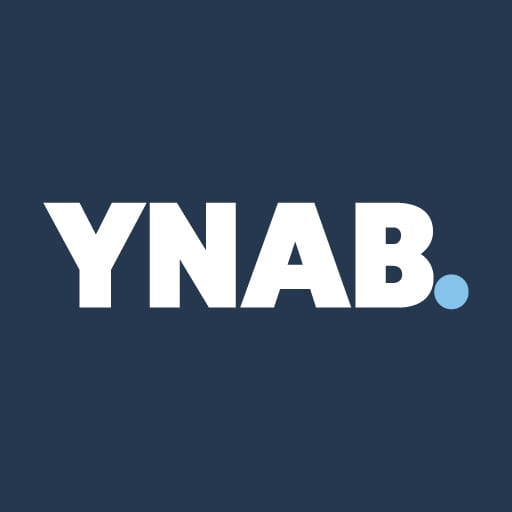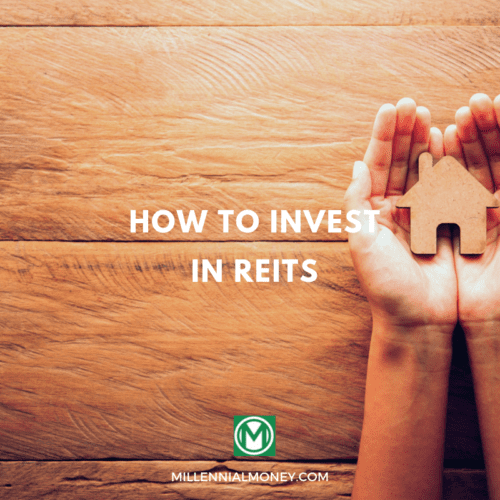As you enter the third decade of your life, the carefree nature of your twenties is transforming into the more stable, more established era of your thirties. As major life events come into play—marriage, children, and buying your first home—your 30s are a crucial decade for personal financial planning and investing.
If you haven’t started yet, don’t assume you’ve missed the boat. Now is as great a time as any to begin building wealth and preparing a nest egg for your future.
With careful planning and strategy, investing in your 30s can be the best financial decision you ever make. Here I’ll walk you through the steps you can take and how much to save to be ready for retirement and secure your personal finances.
6 Tips to Start Investing in Your 30s
Here are 6 tips to start building wealth by investing as much as possible in your 30s.
- Set Financial Goals
- Get Out of Debt
- Build Up an Emergency Fund
- Plan for Retirement
- Diversify your Investments
- Build Wealth with Real Estate
1. Set Your Financial Goals
Investing in your financial future is one of the best things you can do at any age. But before you start investing, you should establish your financial goals. Once you know what you want to achieve, you can create a plan to guide your savings and investments over the years, ensuring you are on the right track to meeting your target.
Keep your goals specific and measurable. Instead of saying, “I want to save money,” say, “In 3 years, I want to have saved $30,000 for a down payment on a house,” or, “By the time retirement comes, I want to have $1 million waiting for me.” The more specific you are with your financial goals, the easier it will be to track your progress and stay focused.
You may have several goals, some of which are more pressing than others—plan for those you’d like to tackle immediately and allocate your funds accordingly. Try to keep a realistic balance between your short-term goals, like saving for a vacation or a wedding, and long-term goals, such as saving for retirement or your child’s college education.
Most importantly, please don’t set it and forget it. Life can change at any moment, so revisit your financial plan often and make adjustments if needed. Investing takes patience and discipline, so having this financial roadmap in place is essential to keep you on track for the long term.
2. Ditch Your Debt
Before investing, ditching any debt you have, particularly high-interest debt, should be a priority. High-interest consumer debts, like student loans or credit cards with ridiculously high APRs, are a burden on your finances, consume a significant chunk of your income, and make it a challenge to save for the future. Here’s how you can hack it:
- Create a monthly budget: This will highlight exactly how much money you have coming in, how much you’re spending, and where it’s going. Then, you can determine where to cut back on your spending and use that money to pay off your debt.
- Prioritize your debt: Order your debts based on how much interest you’re paying on each. Focus on high-interest debts If you have several, you may want to consolidate them. This will lower your monthly payments and more importantly, the amount of interest you’re paying.
- Use the debt snowball: The debt snowball is a method I recommend to reduce debt. You begin by paying off the smallest balance first. Then, take the money you were using to pay that debt, and put it toward your next smallest debt until that one is paid off. Keep repeating this process until all of your debts are paid off. You’ll build momentum as you pay off each bill. Just make sure to continue paying the minimum on all your other debts.
Removing debt will take time and discipline on your part. Once you have a plan in place, try not to take on any new debts that can cause you to fall back into the same debt cycle.
While the road to being debt-free might seem long, be consistent and focus on how much better your money will work for you without it.
3. Build Up an Emergency Fund
Do you have enough money in your savings account to cover a hefty, unexpected bill? If not, here is where an emergency fund is beneficial.
An emergency fund is money you’ve set aside as a safety net to cover your basic living expenses (food, shelter, and utilities), if you lose your job or encounter financial hardship. It will prevent you from racking up credit card debt or liquidating your assets to get by during a financial crisis.
As a general rule, it is recommended that you should save between three and six months’ worth of expenses in your emergency fund. Keep it where you can easily access it, preferably in a money market or high-yield savings account.
If you have debt but don’t have emergency savings, you may find conflicting information about which to tackle first. While you should prioritize paying off high-interest debt, if your budget allows, you may want to take a balanced approach in which you can both pay down your debt and save for unexpected expenses.
4. Plan for Retirement
Plenty of us dream of the day when we won’t have to work anymore. If you prefer to stop working sooner rather than later, the time to maximize your retirement savings is now. With so many options for retirement planning, it can be overwhelming to know where to start.
Employer 401(k) Match
If your employer offers a 401(k), 403(b), or another employer-sponsored retirement plan, take advantage of it immediately. Your retirement plan contributions are automatically withdrawn, pre-tax, from your paycheck.
Even better, most employers offer a match program, which is free money for your retirement. Make sure you are receiving the full match amount, even if that means you need to contribute a little more.
Roth IRA
The next best investment for your financial future is to invest in a Roth IRA. A Roth IRA is an individual retirement account that allows you to contribute after-tax dollars up to the annual contribution limit—currently $6,500 for those 49 years old and under and $7,500 for those 50 and older. Since you’ve already paid taxes on what you’ve contributed, you can withdraw it tax-free once you reach retirement age.
Several perks come along with a Roth IRA investment. Your money grows tax-free in a Roth IRA, meaning you won’t have to pay taxes on any interest, dividends, or capital gains on your investment. Plus, you can withdraw your contributions at any time without penalty.
(If you’d prefer to contribute pre-tax, you can always choose a traditional IRA. This would allow you to claim a tax deduction now, but you will have to pay taxes later when you withdraw your funds).
A Roth IRA offers you a variety of investment options, like ETFs, mutual funds, and individual stocks, as opposed to a 401(k) that likely only has a few assets to choose from.
You can open a Roth IRA with a self-directed brokerage account, for those who want to manage their own investments, or a robo-advisor, for those seeking a more hands-off approach and want their assets managed automatically.
5. Invest and Diversify Your Portfolio
An advantage to investing in your 30s is that you still have plenty of time for your money to grow before you need it.
With your retirement age roughly 30-ish years away, you’ll be less affected by the volatility of certain investments, as opposed to those who invest in their 40s and 50s.
With your financial goals set, there are two other investment preferences you’ll need to determine for yourself—your risk tolerance, or exactly how much risk you’re willing to take, and your time horizon, or how long you plan to hold your investment.
You’ll also want to decide on your investment strategy to diversify your portfolio. Diversification is essential to reduce your risks as it spreads out your investments across multiple assets.
You have several options when it comes to diversification. Here are my recommendations:
Mutual Funds
A mutual fund pools your money with several other investors. That money is then “mutually” used to purchase assets, like stocks, bonds, commodities, and other securities.
Mutual funds are typically managed by a professional fund manager, who chooses your investments, tracks their performance, and makes adjustments to maximize your returns. While there are fees to consider, the fund manager’s goal is to outperform the market—so, your returns have the potential to more than make up for them.
These are great asset allocation options because your investments are spread out over multiple asset classes. If one asset is underperforming, you still have the others to fall back on.
You can open a mutual fund at several brokerage firms, including Vanguard, Fidelity, and Charles Schwab. You can easily manage your account through their website portal or mobile app.
ETFs and Index Funds
Similar to mutual funds, ETFs (exchange-traded funds) and index funds are good options for those investing in their 30s.
ETFs are an investment that hold a basket (or collection) of securities that often share a similar theme or set of criteria. When you purchase shares of an ETF, you own a small portion of every asset in the fund.
Index funds track the performance of a specific market index, such as the S&P 500, which follows 500 of the largest companies on the stock market in the United States. Index funds aim to match the performance of whichever index they track and commonly have low management fees.
ETFs are traded the same as individual stocks and can be bought or sold at any time during the trading day. Alternatively, index funds can only be purchased and sold at the end of the trading day.
Individual Stocks
Investing in individual stocks can be a great way to build wealth. As I mentioned earlier, while you’re in your 30s, you likely have a longer time horizon, allowing you to take on more risk and potentially reap greater rewards.
This is the most common investment strategy used, especially with those who want to hold for the long-term. Many prefer investing in individual stocks because they offer the potential of a significantly higher return than mutual funds or index funds, and you get to choose the stocks you feel will perform the best.
If a company piques your interest, be sure to research it (and its related industry) before making any financial decisions. You should also consider how well that company is doing and if you think it will continue to do well down the line. It would be best if you tried to purchase stock from a few different companies—that way, you reduce your risk by not putting all of your eggs in one basket.
Once you are ready, open a brokerage account with an online broker like Robinhood, M1 Finance, or Charles Schwab and fund your account. You can get started as soon as today.
High-Yield Savings Accounts (HYSAs) or Certificates of Deposit (CDs)
High-yield savings accounts (HYSA) and certificates of deposit (CD) are two types of savings accounts offered by banks and credit unions.
They are both good options for funds you want to keep liquid, as you can earn interest with no risk and easily access it. Ideally, you would keep your emergency fund or money you’re saving for an upcoming expense in an HYSA or CD.
With a high-yield savings account, you’ll get a much higher interest rate than with a traditional one, making them a popular choice for those looking to maximize their savings. Depending on the bank, interest rates can range from 0.25% to 5.00%.
A certificate of deposit (CD) requires you to deposit a specific amount of money for a set amount of time. You can choose the length of the term, which can range from a few months up to five years—the longer the term, the higher your CD’s interest rate. You won’t be able to make withdrawals (at least, not without penalty) until your term is over, so be sure to choose the amount of time that works best for you.
Both HYSAs and CDs are FDIC-insured, which means your funds are protected up to $250,000, should the institution fail.
To get started with either type of account, you should compare rates and find the best option for your financial plans. Always read the fine print so you know of any and all fees or penalties you could incur with your account.
Alternative Investments
Alternative investments are those that fall outside of the traditional investments of stocks and bonds. They’ve been growing in popularity over the past decade, especially with those who don’t want their investments tied to the stock market.
The most common alternative investments are:
- Cryptocurrency (Bitcoin, Ethereum, etc.)
- Commodities (precious metals, fine art, wine, etc.)
- Real estate (see below)
- Venture capital (start-ups)
- Hedge funds
Alternative investments can be risky, so do your research first. Typically, alternative investments can have higher returns than traditional investments, but they also come with greater risk. Assess the potential risks and rewards, and make sure you understand the terms of your investment.
Again, alternative investments can be a great way to add diversification to your portfolio; however, like with all other investments, I don’t advise making them the sole investment in your financial plan.
INVESTMENT AND INSURANCE PRODUCTS ARE: NOT A DEPOSIT • NOT FDIC INSURED • NO BANK GUARANTEE • MAY LOSE VALUE6. Build Wealth with Real Estate
Real estate investments can provide you with a steady stream of passive income and potential capital appreciation.
Here are a few ways you can get started investing in real estate:
- Rental properties: You can purchase physical properties, rent them out to tenants, and earn income from the rent payments. Remember, this makes you a landlord, so you’ll be responsible for managing the property and handling any necessary requests and repairs.
- Fix and flip: With this strategy, you can purchase undervalued properties, fix them up, and sell them for a profit. While this option will require a lot of work (and funding) upfront, it can have a sizeable payout in the long run.
- Real estate investment trusts (REITs): This is a great strategy for those who don’t want the hassle of owning or managing physical properties. With REITS, you can invest in real estate companies that own and manage commercial properties and receive a share of the profits. REITs are appealing in that they offer high dividends and have a history of high returns.
- Real estate crowdfunding: This is a relatively new way to invest in real estate. With real estate crowdfunding apps like Fundrise, RealtyMogul, and Crowdstreet, investors can pool their resources and invest in a single project.
Real estate investing offers several compelling benefits, including the potential to generate passive income and great tax benefits. In addition, real estate investments can provide a hedge against inflation, as real estate value typically increases with inflation.
Remember to assess the risks associated with real estate investments, such as market fluctuations and changes in local regulations, before diving into real estate.
I’ve been investing with Fundrise since 2017. Disclosure: when you sign up with my link, I earn a commission. All opinions are my own.
How Much Should You Invest in Your Thirties?
Generally, it is recommended to save at least 10-15% of your income for your retirement years. However, how much you decide to invest in your 30s really depends on your financial goals (both short and long-term) and your overall financial situation. Consider your income, debt, savings, and expenses when deciding how much money to invest.
Further, you will also need to consider the type(s) of investments you are considering, as well as your risk tolerance and time horizon.
Use my retirement calculator to assess how much you will need by retirement age, and how much more you need to save to get there.
Frequently Asked Questions
Do I need a financial advisor to start investing?
While you may not “need” a financial advisor to get started, you may get peace of mind in consulting with a professional for their financial expertise and investment advice. If you’re new to investing and don’t feel confident investing on your own, a financial planner can help you make decisions and guide you through the process.
Learn more:
What are the risks associated with investing in my 30s?
Common risks associated with investing in your 30s can include market volatility, inflation, and interest rate fluctuation—however, these are risks any investor can face at any age. That’s why it’s important to decide what your risk tolerance level is ahead of investing—conservative (low risk), moderate (medium risk), or aggressive (high risk)?
Whichever you are, it is always essential to diversify your investments across several asset classes to minimize your risks and maximize your potential gains.
Learn more:
Should I prioritize purchasing a home in my 30s?
Purchasing a home in your 30s can be a great investment as it can help build equity, provide tax benefits, offer stability, and help build your wealth over time.
However, whether you should purchase a home in your 30s will depend on your individual financial situation and goals. Weigh the pros and cons of owning a home, such as the potential for long-term financial stability and the upfront costs of a down payment, closing costs, and maintenance.
Ultimately, you will have to decide if homeownership is the right choice for your current lifestyle and future plans.
Should I purchase life insurance in my 30s?
At this stage in your life, you are in a great position to purchase life insurance—you’re young and in good health—and so, policies for those in their 30s have some of the lowest premiums. Additionally, if you have others in your life that are financially dependent on you, a life insurance policy can provide financial security and peace of mind for you and your family.
How Should I Start Investing in My 30s?
When it comes to investing in your 30s, you are not without options. Whether you begin by paying off debt, building an emergency fund, investing in real estate, stocks, and other securities, or saving for retirement—these tips will set you on the right path for your short and long-term goals.
Regardless of the specific investments you choose, balancing risk and return, diversifying your investments, and staying the course in the long term are all essential to securing your financial future.






No comments yet. Add your own